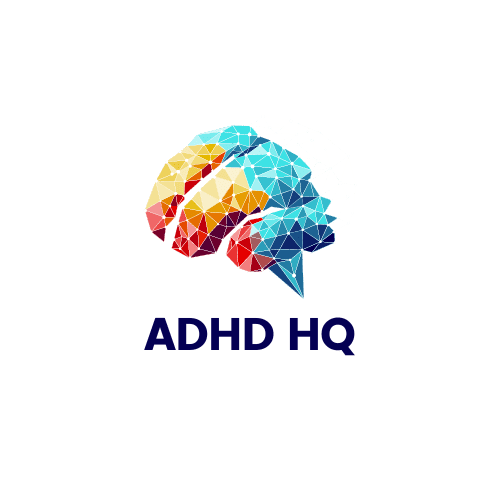Autism Behavior Checklist
I've often wondered about the effectiveness of the Autism Behavior Checklist in accurately capturing the diverse behaviors associated with autism spectrum disorder. As I examined the various categories and scoring system of the checklist, I found myself intrigued by its potential to provide valuable insights into a child's behavior.
The way each item is meticulously assessed seems to offer a thorough view of autism symptoms. However, there's a lingering question about how caregivers and professionals can effectively utilize this tool to support individuals with autism.
Key Takeaways
- ABC assesses autism symptoms in children aged 3+ across various categories.
- Uses a 1 to 4 scoring system for detailed evaluation.
- Reliable tool for assessing sensory, social, and communication behaviors.
- Vital for identifying early signs, guiding interventions, and supporting individuals with autism.
Importance of Autism Behavior Checklist

In evaluating autism symptoms in children aged 3 and older, the Autism Behavior Checklist (ABC) plays a critical role due to its structured and thorough evaluation approach. As a parent or teacher completing the ABC, I understand the importance of its detailed categories covering sensory, relating, body and object use, language, and social/self-help behaviors. Each item's 1 to 4 scoring system allows for a detailed assessment of the child's behaviors within the autism spectrum. The ABC's inception in 1980 as part of the Autism Screening Instrument for Educational Planning (ASIEP) underscores its strong foundation, having undergone psychometric evaluations to guarantee reliability and validity.
Completing the ABC for a child provides valuable insights into their social interactions, communication skills, and overall behavior. The checklist serves as a structured tool aiding in the identification of potential autism symptoms early on, enabling timely interventions and support tailored to the child's specific needs. The ABC's role in evaluating children on the autism spectrum is indispensable, guiding caregivers and educators in understanding and addressing the complex behavioral patterns associated with autism.
Early Signs of Autism

Recognizing the early signs of autism is important for providing timely intervention and support to children who may be exhibiting developmental delays in speech, social interaction, and play. Early signs of autism can manifest in various symptoms and behaviors that may raise concerns for parents and caregivers. These signs could include delayed speech development, difficulties in social interactions such as making eye contact or understanding emotions, as well as engaging in repetitive behaviors and showing sensory sensitivities.
The Autism Screening Instrument plays an important role in the early diagnosis of autism by identifying these key indicators. Children with autism may also exhibit resistance to changes in routines and environments, along with fixations on specific objects. Understanding these early signs is essential for early intervention, which can help in providing appropriate support and therapies tailored to the child's needs, enhancing their overall development and quality of life.
Recognizing Autism Symptoms

Understanding the various behavioral indicators and symptoms associated with autism is essential for early detection and intervention. When it comes to recognizing autism symptoms in a child, tools like the Autism Behavior Checklist (ABC) play a vital role.
The ABC is a behavior rating scale that helps in evaluating behaviors and symptoms commonly seen in autism spectrum disorders. It covers areas such as sensory processing, social interactions, communication skills, and self-care abilities. Each of the 57 items on the ABC is rated on a scale of 1 to 4 by a parent, teacher, or another individual familiar with the child's behavior.
Originally part of the Autism Screening Instrument for Educational Planning (ASIEP), the ABC is now widely used to help diagnose autism spectrum disorder. Psychometric evaluations have shown that the ABC is a reliable tool when administered by a trained professional for scoring, aiding in the identification of autism symptoms in individuals.
Utilizing ASD Checklists

Utilizing ASD checklists provides a structured approach to evaluating behaviors and symptoms associated with autism spectrum disorder. Screening tools such as the Modified Checklist for Autism in Toddlers (M-CHAT-R) are valuable for appraising autism in toddlers aged 16 to 30 months.
The Communication Checklist focuses specifically on communication challenges typical of ASD, while the Unusual Physical Behavior Checklist highlights behaviors often seen in individuals with autism spectrum disorder. These tools aid in identifying symptoms and behaviors associated with ASD for further evaluation.
In addition, the DSM-V Checklist for ASD outlines specific criteria essential for diagnosing autism spectrum disorder, emphasizing social communication deficits and repetitive behaviors. By utilizing these checklists in behavior appraisals, healthcare professionals can gather thorough information to make informed decisions regarding the diagnosis and treatment of individuals with autism spectrum disorder.
When to Seek Professional Help

If you observe consistent signs of autism in your child, particularly social communication challenges or repetitive behaviors, seeking professional help is important for timely intervention and support.
Early intervention plays a vital role in addressing developmental issues associated with autism. When there are concerns about your child's development, consulting a healthcare provider for a diagnosis of autism is recommended. A pediatrician can conduct diagnostic tests to confirm autism and provide guidance on the next steps for treatment and support.
It's essential to be proactive and seek professional evaluation if your child exhibits two or more symptoms that raise concerns about autism. By ruling out environmental factors and seeking timely professional advice, you can make sure that your child receives the necessary support and interventions.
Next Steps for Families

For families managing the complexities of addressing autism symptoms in their children, exploring the Autism Behavior Checklist (ABC) can provide valuable insights into their child's behaviors and guide the next steps in intervention and support.
The ABC serves as an important instrument in identifying and evaluating the symptoms of autism in children aged 3 and older. It covers various categories, including sensory, relating, language, and social/self-help behaviors, allowing parents and teachers to evaluate specific autism-related behaviors effectively.
By utilizing the ABC, families can gain a thorough understanding of their child's needs and challenges, paving the way for tailored interventions and support strategies. Understanding how their child processes sensory input, communicates, and interacts socially is essential in addressing the unique characteristics of autism spectrum disorder.
Moving forward, families can utilize the information gathered from the ABC to make informed decisions about the next steps in providing the necessary assistance and resources for their children with autism.
Supportive Resources for Caregivers

As a caregiver maneuvering the complexities of autism, it's crucial to utilize resources like online support groups and counseling services. These avenues offer a platform for sharing experiences, gaining insights, and seeking guidance from professionals and peers who understand the challenges you face.
Online Support Groups
Handling the challenges of caring for individuals with autism can be made easier through the invaluable support found in online caregiver communities. Online support groups dedicated to autism provide caregivers with emotional support, practical advice, and a sense of community.
These platforms offer a space for sharing experiences and connecting with others facing similar challenges. By participating in these groups, caregivers can access a wealth of resources, educational materials, and expert advice tailored to the needs of individuals with autism.
Engaging with online support groups not only reduces feelings of stress, anxiety, and loneliness but also fosters a supportive network of understanding individuals. These communities cater to diverse needs, supporting parents, siblings, family members, and professionals involved in the care of individuals with autism.
Counseling Services
Exploring the complexities of caring for individuals with autism can be greatly aided by seeking support from counseling services, which offer emotional guidance and practical assistance to caregivers. Counseling services provide a safe space for caregivers to express their feelings, learn effective coping strategies, and enhance communication within the family.
By understanding autism better and gaining insights into managing behaviors, caregivers can navigate challenges more effectively. Counselors also assist in developing self-care routines and connecting caregivers with community resources for additional support.
Frequently Asked Questions
What Are Signs of Autistic Behavior?
Understanding signs of autistic behavior is important for early intervention. Challenges in social skills, sensory sensitivity, communication struggles, repetitive behaviors, emotional regulation, and the need for individualized support are key indicators. Recognizing these signs allows for tailored assistance.
What Is Typical Autism Behaviour?
Typical autism behavior involves struggles with social skills, communication challenges, sensory sensitivities, repetitive behaviors, special interests, emotional regulation issues, and meltdowns or shutdowns. Understanding these aspects is essential for supporting individuals on the autism spectrum.
How Do You Calm Someone With Autism?
To calm someone with autism, create a quiet space with minimal sensory input, use visual schedules for routine consistency, offer deep pressure tools, practice breathing exercises, and provide positive reinforcement. These strategies promote relaxation and emotional regulation.
What Are the 3 Main Causes of Autism?
Genetic factors, environmental triggers, and brain development are key elements in understanding autism. How these components investigate remains complex. Research explores the intricate dance of genes, environment, and neuroscience to unravel autism's mysteries.
Conclusion
After utilizing the Autism Behavior Checklist, I discovered the key to understanding my child's unique behaviors and needs.
Just like a compass guides a lost traveler through unfamiliar terrain, the ABC provided me with direction and clarity on how to support my child with autism.
By recognizing the early signs, seeking professional help, and utilizing resources, families can navigate the challenges of autism with confidence and compassion.







